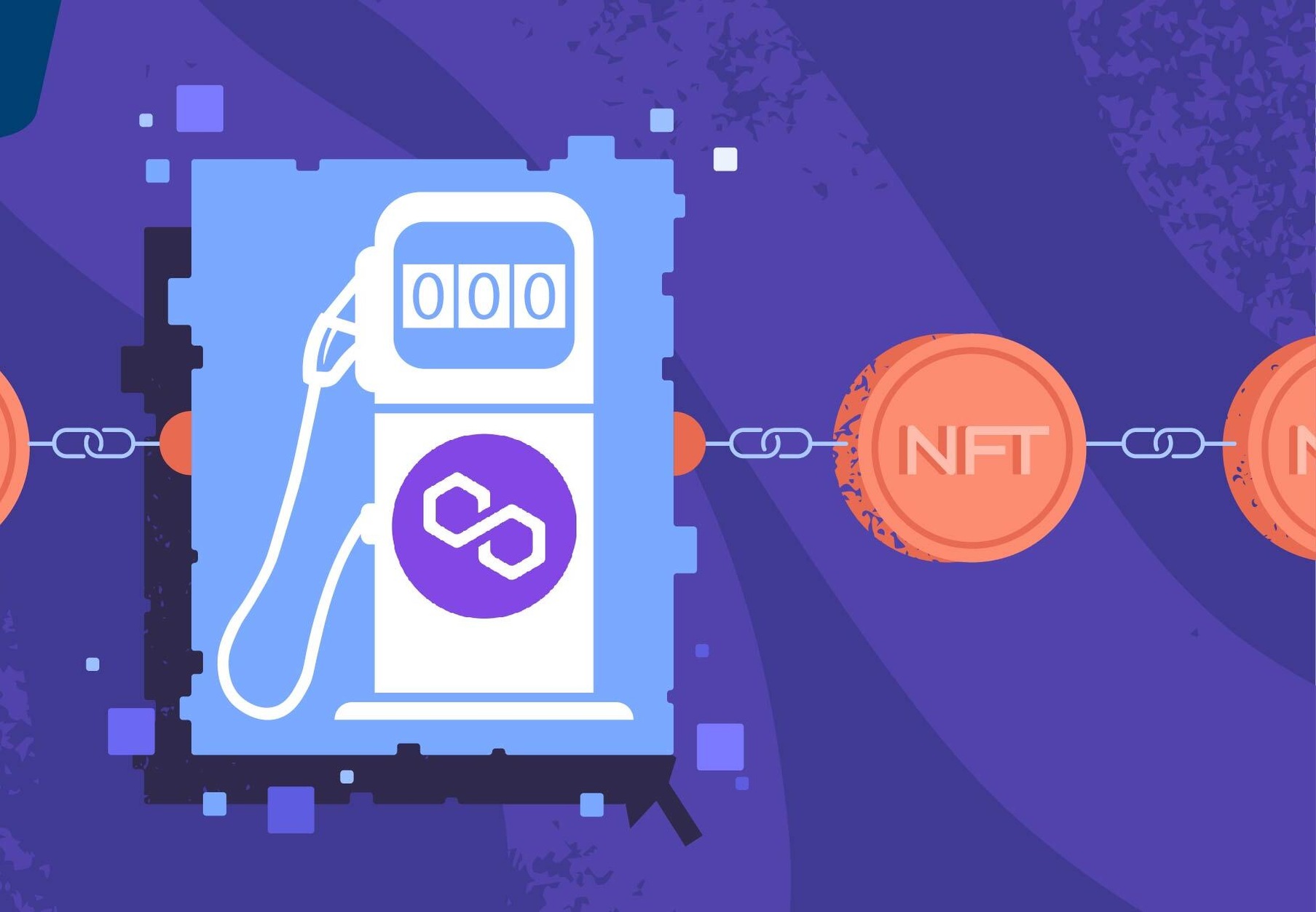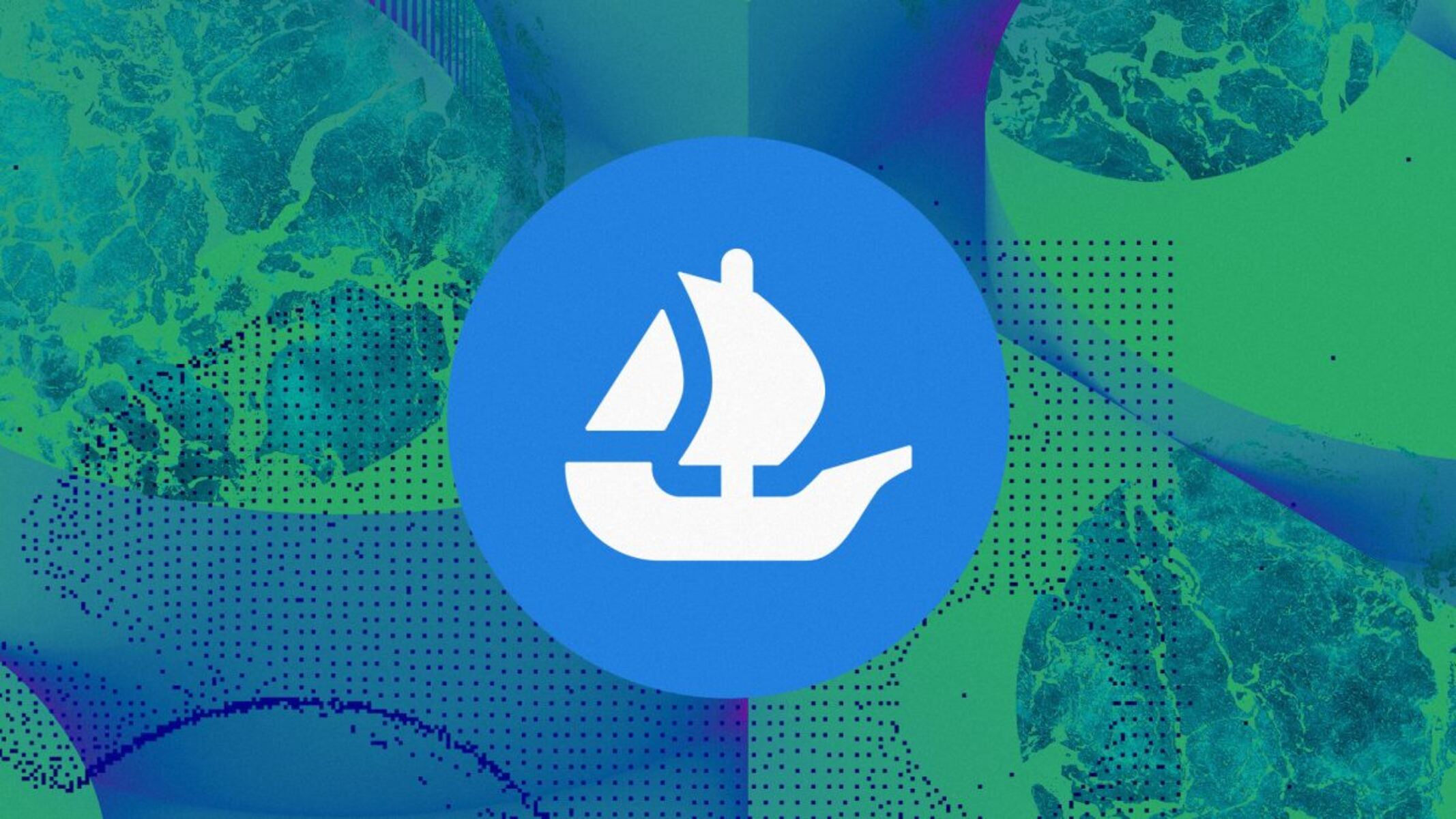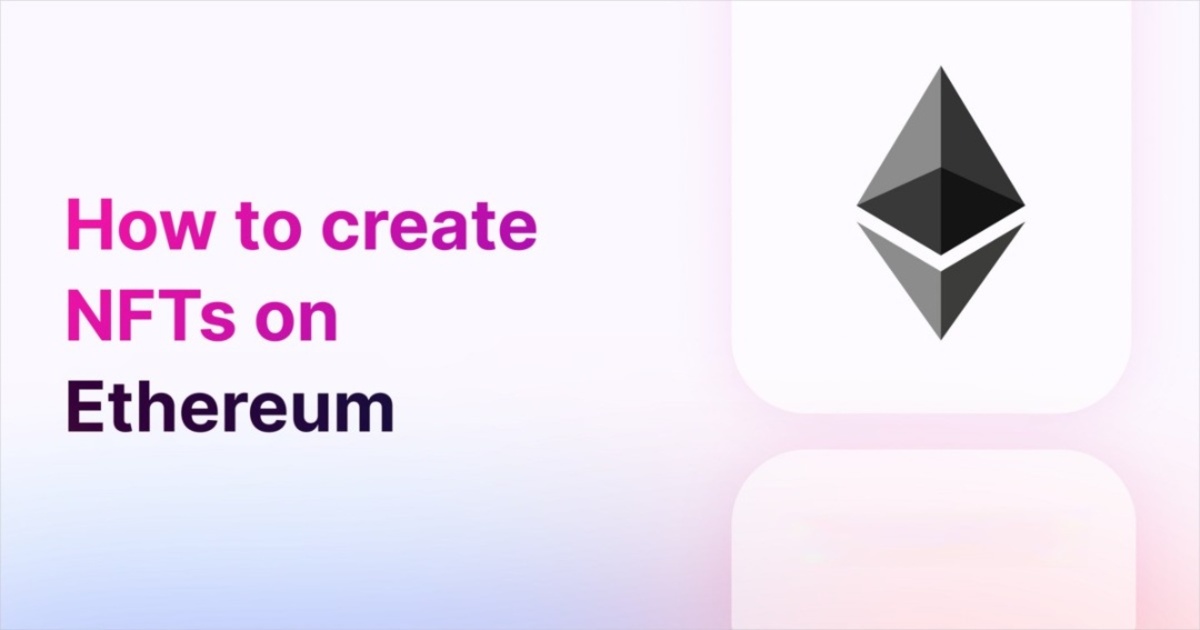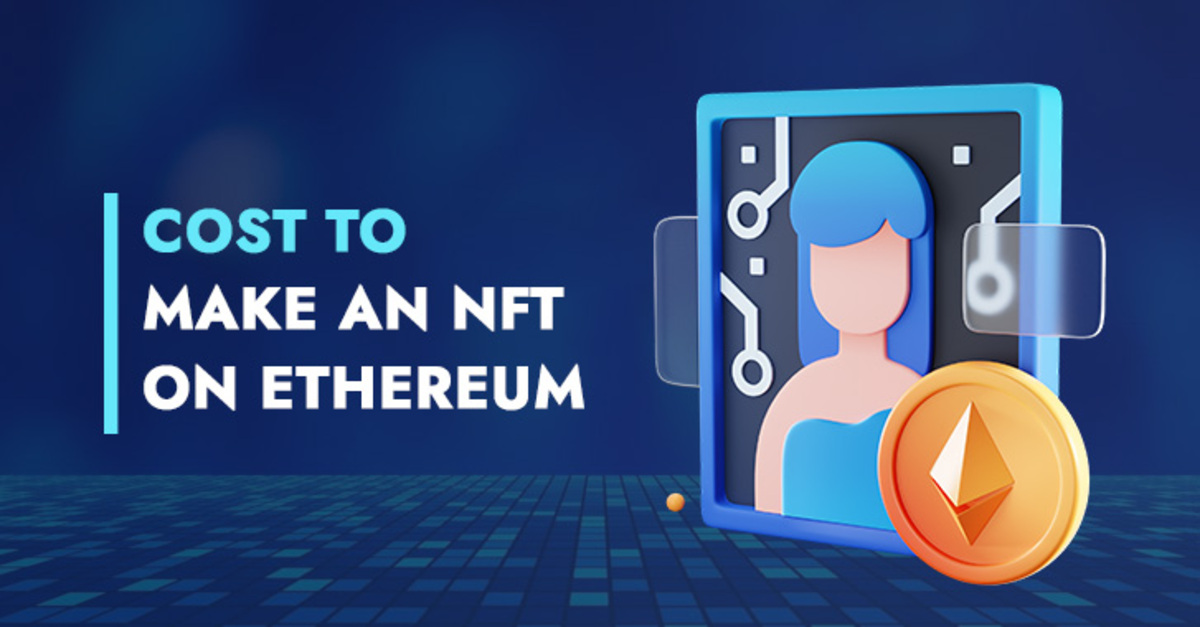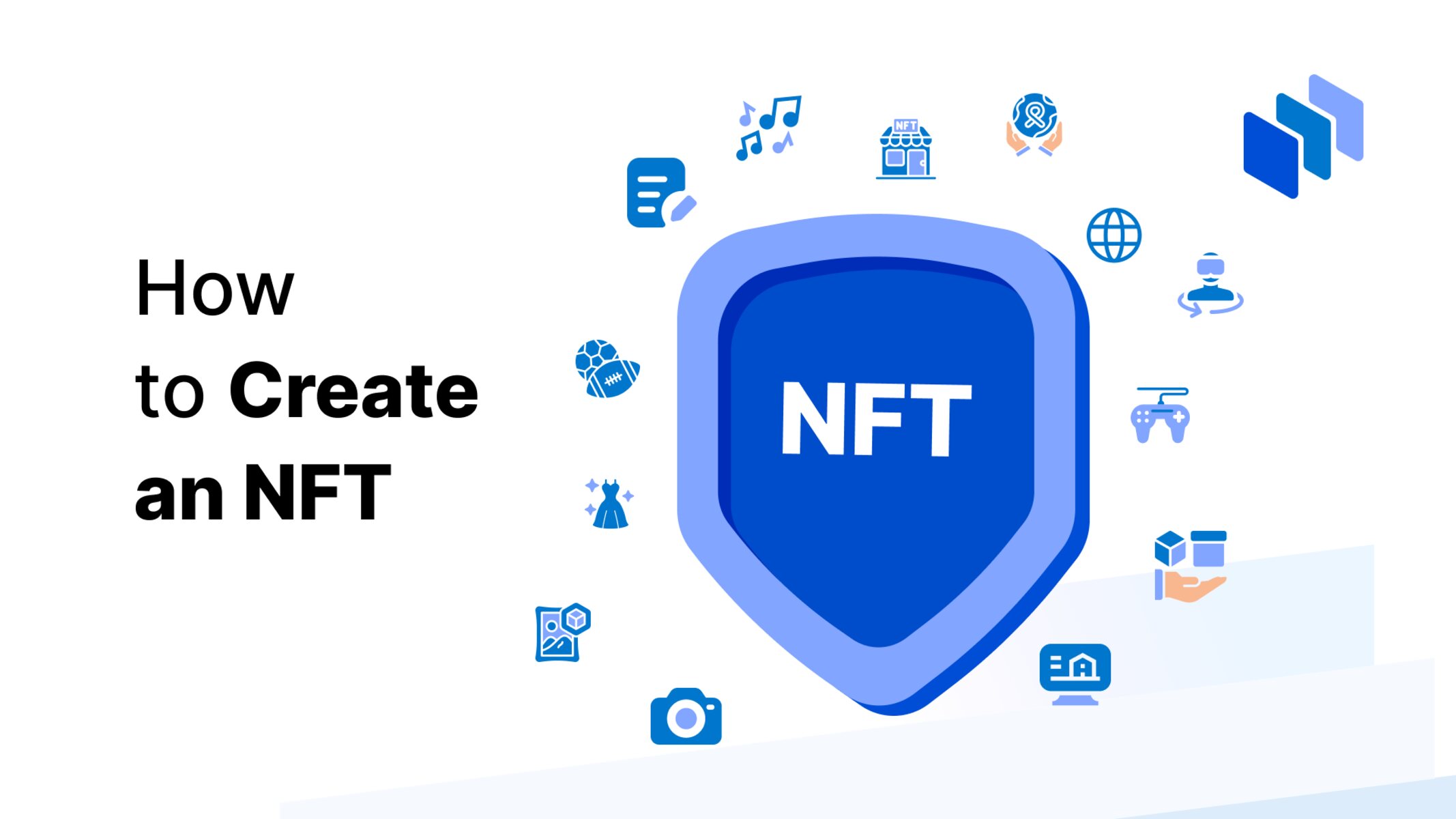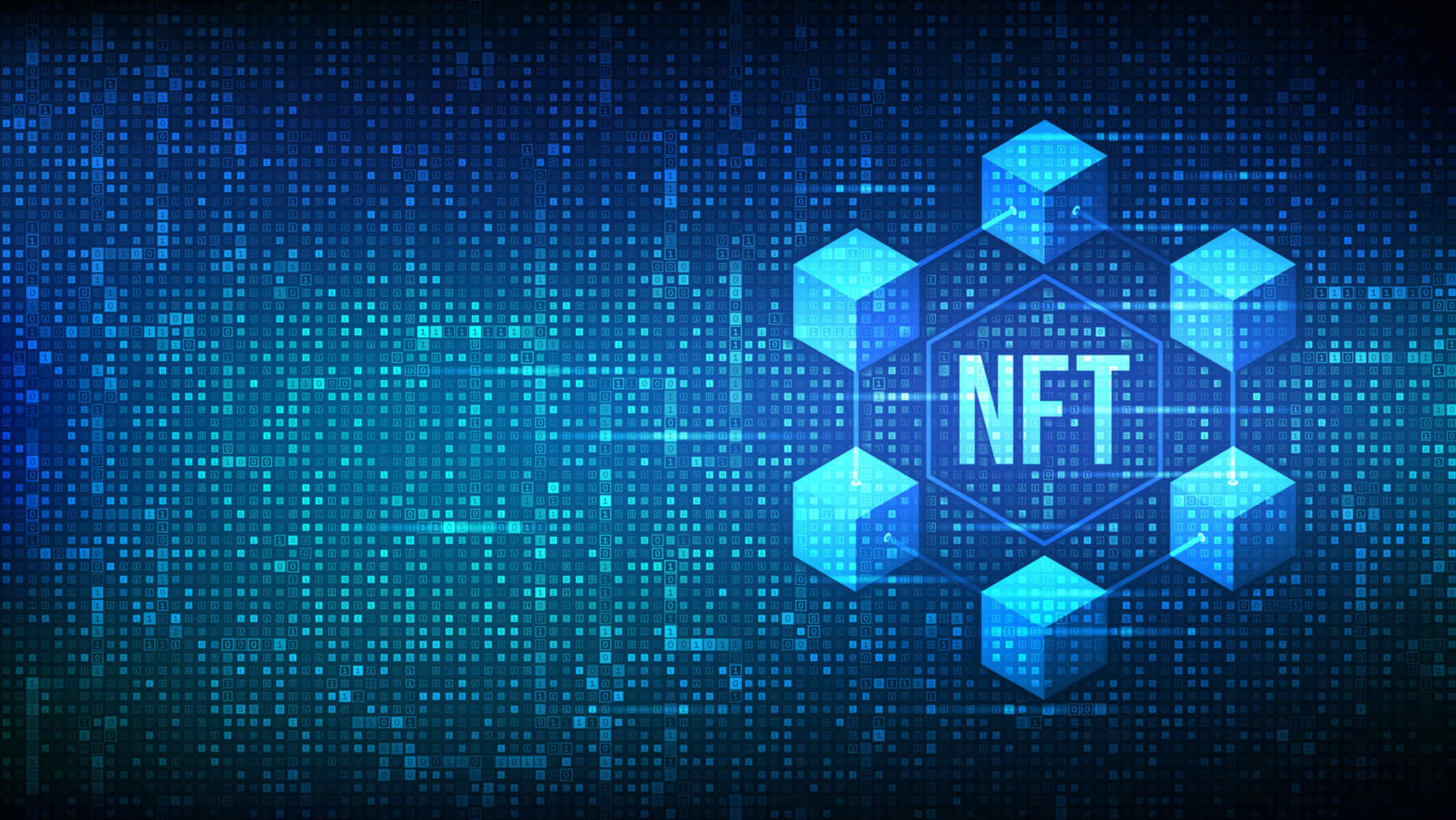Introduction
Welcome to the fascinating world of non-fungible tokens (NFTs) on the Ethereum blockchain. In recent years, NFTs have gained exponential popularity, revolutionizing the way creators, artists, and collectors interact with digital art, music, and collectibles.
But what exactly is an NFT? At its core, an NFT represents a unique digital asset that cannot be replicated or exchanged on a one-for-one basis. Unlike cryptocurrencies such as Bitcoin or Ethereum, which are fungible and can be exchanged equally, each NFT is distinct, making it one-of-a-kind.
So why would anyone want to mint an NFT on the Ethereum blockchain? Ethereum is the leading blockchain platform for NFTs due to its robust smart contract capabilities and widespread adoption. By leveraging Ethereum, creators can tokenize their digital creations, ensuring their authenticity, provenance, and scarcity.
In this guide, we will walk you through the process of minting an NFT on the Ethereum blockchain. From setting up your Ethereum wallet to choosing the right NFT platform, uploading your artwork, and promoting and selling your NFT, we’ll cover all the essential steps to get you started on your NFT journey.
But before we dive into the details, it’s important to note that minting an NFT on Ethereum comes with transaction costs and gas fees. Gas fees are the costs associated with executing actions on the Ethereum network, and they can vary depending on network congestion. Therefore, it’s essential to consider these factors when minting and selling your NFTs.
Now that we have covered the basics, let’s proceed to the next sections, where we will guide you through the process of minting your own NFT on the Ethereum blockchain. Get ready to unleash your creativity and explore the exciting world of NFTs!
What is an NFT?
At its core, a non-fungible token (NFT) represents a unique digital asset. Unlike cryptocurrencies such as Bitcoin or Ethereum, which are fungible and can be exchanged on a one-to-one basis, each NFT is distinct and cannot be replicated.
Think of NFTs as digital certificates of authenticity, similar to limited edition prints or rare collectibles in the physical world. They provide a way to establish ownership and provenance for digital assets, including art, music, videos, virtual real estate, and more.
One of the defining features of NFTs is their ability to store metadata on the blockchain. This metadata includes information such as the creator’s name, the asset’s description, and other relevant details. It ensures transparency and can establish the uniqueness and rarity of the NFT.
Another critical aspect of NFTs is their indivisibility. Unlike cryptocurrencies where you can own fractions of a coin, NFTs are typically whole units. However, some platforms allow for fractional ownership of NFTs, where multiple people can co-own a single NFT.
For creators, NFTs present exciting opportunities. By minting their artwork as an NFT, they can establish ownership, secure a record of their work, and sell it directly to collectors without the need for intermediaries.
Collectors, on the other hand, are drawn to NFTs for their scarcity and collectible value. Owning an NFT grants them exclusive rights to a specific digital asset, making them a part of an exclusive community of collectors and enthusiasts.
It’s important to note that although an NFT grants ownership rights to a digital asset, it doesn’t necessarily grant copyright or reproduction rights. The creator of the NFT retains those rights unless transferred separately.
The popularity of NFTs has skyrocketed in recent years, leading to high-profile sales and an increased interest in digital art and collectibles. NFTs have provided a new avenue for artists, musicians, and creators to monetize their work and connect directly with their audience.
With a solid understanding of what NFTs are and why they are becoming increasingly popular, let’s proceed to the next sections, where we will go into detail on how to mint your own NFT on the Ethereum blockchain.
Why Mint NFTs on Ethereum?
When it comes to minting non-fungible tokens (NFTs), Ethereum has established itself as the go-to blockchain platform. But what makes Ethereum the preferred choice for creators and collectors?
First and foremost, Ethereum is a robust and widely adopted blockchain network. It has a proven track record and a large community of developers and users, making it a reliable and secure platform for minting NFTs.
One of the key advantages of using Ethereum for NFTs is its smart contract functionality. Smart contracts are self-executing contracts with predefined terms written in code. They enable creators to establish ownership rights, define royalty structures, and automate the sale and transfer of NFTs.
Ethereum’s smart contracts also allow for the implementation of royalties. This means that creators can receive a percentage of future sales whenever their NFT is sold in secondary markets. It provides a sustainable revenue stream for artists and incentivizes the creation of high-quality and valuable NFTs.
Furthermore, Ethereum’s flexibility allows creators to tokenize various types of digital assets. Whether it’s artwork, music, virtual real estate, or even in-game items, Ethereum provides the infrastructure and tools to tokenize and trade these assets as NFTs.
Another crucial factor in choosing Ethereum for minting NFTs is its interoperability. Ethereum’s network is compatible with various NFT platforms and marketplaces, allowing creators to reach a broad audience and make their NFTs accessible to collectors from around the world.
Additionally, Ethereum boasts a vibrant and active NFT community. Artists, collectors, and enthusiasts flock to Ethereum-based platforms to discover, buy, and sell NFTs. This active ecosystem provides opportunities for collaboration, exposure, and networking within the NFT space.
While Ethereum offers numerous advantages for minting NFTs, it’s important to consider the transaction costs and gas fees associated with using this blockchain. Gas fees are the costs required to execute transactions and interact with smart contracts on the Ethereum network. These fees can fluctuate based on network congestion, so it’s essential to plan and budget accordingly.
In summary, minting NFTs on Ethereum provides creators with a reliable and secure platform with smart contract functionality, royalty capabilities, and interoperability. Ethereum’s active community and established infrastructure make it an ideal choice for artists, musicians, and creators looking to enter the exciting world of NFTs.
Now that we understand why Ethereum is the preferred blockchain for minting NFTs, let’s move on to the next sections, where we will guide you through the process of setting up your Ethereum wallet and choosing the right NFT platform to showcase and sell your creations.
Setting up your Ethereum Wallet
Before you can start minting NFTs on the Ethereum blockchain, you’ll need to set up an Ethereum wallet. An Ethereum wallet allows you to securely store your digital assets, interact with smart contracts, and manage your Ethereum transactions.
There are several types of Ethereum wallets to choose from, each with its own advantages and features. Let’s explore some of the most common options:
- Web-based Wallets: These wallets are accessible through web browsers, making them convenient and easy to use. Examples include MetaMask and MyEtherWallet. Simply visit their websites, create an account, and follow the steps to set up your wallet. Remember to write down and securely store your wallet’s seed phrase or private key.
- Desktop Wallets: Desktop wallets are applications that you download and install on your computer. They offer enhanced security as your private keys are stored locally on your device. Popular desktop wallets include Exodus and Atomic Wallet. Download the wallet software from their respective websites, install it, and follow the instructions to set up your wallet.
- Hardware Wallets: For enhanced security, hardware wallets are physical devices that store your private keys offline. Examples include Ledger and Trezor. Setting up a hardware wallet involves connecting the device to your computer, following the instructions on the device’s screen, and creating a secure PIN. Make sure to keep your hardware wallet and backup seed phrase in a safe place.
- Mobile Wallets: If you prefer using your smartphone, mobile wallets offer a convenient way to manage your Ethereum assets on the go. Trust Wallet and Coinbase Wallet are popular choices. Simply download the wallet app from your device’s app store, create an account, and follow the setup instructions.
Regardless of the wallet type you choose, it’s crucial to keep your wallet information secure. Use strong, unique passwords, enable two-factor authentication whenever possible, and consider storing your seed phrase or private keys in a safe place, separate from your computer or mobile device.
Once you have set up your Ethereum wallet, you will be provided with a unique address, also known as a public key. This address is what you will use to interact with the Ethereum blockchain and receive or send Ethereum and other tokens.
With your Ethereum wallet set up and ready to go, you’re now one step closer to minting your NFTs. In the next sections, we will guide you through the process of choosing an NFT platform, creating and uploading your artwork, and minting your very own non-fungible tokens on the Ethereum blockchain.
Choosing an NFT Platform
Now that you have set up your Ethereum wallet, the next step is to choose an NFT platform to showcase and sell your digital artworks as non-fungible tokens (NFTs). There are several factors to consider when selecting the right platform:
1. Reputation and Authenticity: Look for platforms with a solid reputation and a track record of successful NFT sales. Research the platform’s history, user feedback, and the artists who have already minted NFTs there. A reputable platform provides added credibility to your NFT listings.
2. User Interface and Experience: Consider the platform’s user interface and overall user experience. It should be intuitive, easy to navigate, and offer seamless interactions. A well-designed platform ensures a pleasant experience for both creators and collectors.
3. Community and Exposure: Evaluate the community and reach of the platform. Does it have an active user base and a large number of collectors? A platform with an engaged community can help increase the visibility and exposure of your NFTs, leading to potential sales and collaborations.
4. Royalty Structure: Check the royalty structure of the platform. Some platforms automatically distribute a percentage of future sales to the original creators whenever an NFT is resold. Having a solid royalty structure in place can provide ongoing revenue and incentivize the creation of high-quality NFTs.
5. Gas Fees and Transaction Costs: Take into account the gas fees and transaction costs associated with using the platform. Ethereum-based platforms often require you to pay gas fees for minting, listing, and selling NFTs. Consider your budget and the potential impact of these fees on your earnings.
6. Platform Policies and Terms: Carefully review the platform’s policies and terms of service. Pay attention to aspects such as licensing rights, content restrictions, and any fees or commissions charged by the platform. Ensure that the platform aligns with your requirements and goals as an artist or creator.
7. Specialized Niche Platforms: Consider specialized niche platforms that focus on specific categories of NFTs, such as art, music, or gaming. These platforms often cater to a targeted audience, providing better visibility and networking opportunities within your specific niche.
Some popular NFT platforms to consider include OpenSea, Rarible, SuperRare, Foundation, and Nifty Gateway. It’s advisable to explore these platforms, compare their features, and consider the factors mentioned above before making your final decision.
Remember, you can choose multiple platforms to maximize your exposure and increase your chances of success. Each platform has its own unique features, audience, and strengths, so diversifying your presence can help you tap into different markets and connect with collectors from various communities.
Once you have selected the NFT platform(s) that best align with your goals, it’s time to create and upload your artwork. In the next sections, we will guide you through the process of preparing your artwork, adding metadata, setting a price, and minting your NFTs on the Ethereum blockchain.
Creating your NFT
With your Ethereum wallet set up and an NFT platform chosen, it’s time to create and mint your very own non-fungible tokens (NFTs) on the Ethereum blockchain. Creating an NFT involves several steps, so let’s dive in:
1. Prepare your Artwork: Start by preparing your digital artwork or media. This can include digital paintings, illustrations, photographs, animations, music files, videos, or any other type of digital asset that you want to tokenize as an NFT. Ensure that your artwork meets the platform’s requirements for file format, size, and quality.
2. Add Metadata and Details: Metadata is essential for describing and providing additional information about your NFT. Common metadata includes the title of the artwork, a description, the year of creation, the artist’s name, and any other relevant details. Some platforms also allow you to add tags or keywords to help categorize your NFT for better discoverability.
3. Set a Price and Royalties: Determine the price at which you want to sell your NFT. Consider factors such as the perceived value of your artwork, market trends, and the demand for similar NFTs. Additionally, some platforms allow you to set royalty percentages, meaning you can earn a percentage of future sales whenever your NFT is resold on the platform’s secondary market.
4. Upload your Artwork: Once you have prepared your artwork and added the necessary metadata, you can upload your files to the chosen NFT platform. Follow the platform’s instructions for uploading your digital assets. Make sure to select the correct file and provide any additional details requested by the platform.
5. Preview and Verify: Before minting your NFT, most platforms allow you to preview and verify how your artwork will be displayed. Take this opportunity to review your listing, ensure all information is accurate, and make any necessary adjustments to optimize the presentation and appeal of your NFT.
6. Mint your NFT: Once you are satisfied with the artwork and metadata, it’s time to mint your NFT. Minting refers to the process of permanently recording your NFT on the Ethereum blockchain, establishing its authenticity and ownership. Follow the platform’s instructions for minting, which typically involve confirming the transaction and paying the associated gas fees.
7. Verify and Finalize: After the minting process is complete, verify that your NFT appears correctly on the blockchain and the platform. Check the transaction details and confirm that your NFT has been added to your collection and is available for sale.
Keep in mind that once an NFT is minted, it becomes part of the blockchain and cannot be altered. Therefore, ensure that all information and details are accurate before proceeding with the minting process.
Congratulations! You have successfully created and minted your NFT on the Ethereum blockchain. In the next sections, we will cover topics such as gas fees and transaction costs, promoting and selling your NFT, and provide additional tips and strategies to maximize your success in the NFT space.
Uploading your Artwork
Now that you have prepared your digital artwork, the next step in minting your non-fungible token (NFT) is to upload it to your chosen NFT platform. The process of uploading your artwork may vary slightly depending on the platform, but here are the general steps to follow:
1. Prepare Your Artwork: Ensure that your artwork meets the platform’s requirements for file format, size, and quality. Convert your artwork into the appropriate format, such as JPEG, PNG, GIF, or MP4, depending on the type of media you are uploading.
2. Compress and Optimize: If your artwork file size is larger than the platform allows, consider compressing it without compromising the quality. You can use image compression tools or video codecs to reduce the file size while preserving the integrity of the artwork.
3. Check Copyrights and Permissions: Make sure you have the necessary rights and permissions to upload and sell the artwork as an NFT. If you are using third-party assets, ensure that you have the proper licenses or permissions to use them in your artwork. Avoid copyright infringement issues by creating your original content or obtaining appropriate licenses.
4. Sign and Watermark: Consider digitally signing your artwork to add an extra layer of authenticity and protect against unauthorized reproductions. You may also choose to watermark your artwork with your logo or signature to prevent unauthorized usage or to enhance brand recognition.
5. Upload to the NFT Platform: Go to your chosen NFT platform and navigate to the upload section. Follow the platform’s instructions for uploading your artwork. Typically, this involves selecting the file from your computer or cloud storage and initiating the upload process.
6. Preview and Adjust: Once your artwork is uploaded, most platforms allow you to preview and adjust how it will be displayed. Take this opportunity to review the appearance, make any necessary adjustments to cropping or formatting, and ensure that the artwork is showcased in its best possible light.
7. Add Metadata and Descriptions: Fill in the necessary information about your artwork, such as the title, description, artist name, and any additional details that can help potential buyers understand and appreciate your NFT. This metadata is crucial for providing context and adding value to your artwork.
8. Confirm and Submit: Double-check all the details and settings before submitting your artwork. Once you are satisfied, confirm and submit your NFT for minting on the blockchain. This process may involve confirming the transaction and paying the associated gas fees.
9. Verify and Finalize: After the minting process is complete, verify that your artwork NFT appears correctly on the platform. Confirm that all details, including the artwork file, metadata, and descriptions, are accurately displayed. Make any final adjustments if needed and ensure that your NFT is visible and accessible to potential buyers.
By following these steps, you can effectively upload your artwork to the NFT platform and make it available for purchase as an NFT. In the next sections, we will cover additional aspects of the NFT journey, including adding metadata and details, setting a price and royalties, as well as promoting and selling your NFT to reach your target audience.
Adding Metadata and Details
When minting a non-fungible token (NFT), it’s essential to provide accurate and comprehensive metadata and details about your artwork. Metadata is crucial as it adds context, authenticity, and value to your NFT. Here are some key elements to consider when adding metadata:
1. Title: Choose a descriptive and compelling title for your artwork. The title should provide a glimpse into the essence of your creation and capture the viewers’ attention.
2. Description: Craft a detailed description of your artwork. Explain the inspiration, concept, techniques used, or any unique aspects that make your artwork stand out. Share the story behind your creation to engage potential buyers and provide them with a deeper understanding of your artistic vision.
3. Artist Name: Clearly state your name or artist pseudonym to establish your authorship and claim ownership of the artwork. This allows collectors and enthusiasts to recognize your work and connect with your broader artistic portfolio.
4. Year of Creation: Indicate the year in which the artwork was created. This information helps document its timeline, showcasing its place in your artistic journey and allowing collectors to identify its chronological context.
5. Medium and Dimensions: Specify the medium and dimensions of your artwork. Whether it’s a digital painting, photograph, animation, or any other form of media, sharing the technical aspects adds transparency and assists potential buyers in assessing the value of your NFT.
6. Edition: If your artwork is part of a limited edition series, mention the edition number and the total number of editions available. Limited editions can add exclusivity and value to your NFT, enticing collectors who seek unique and scarce digital assets.
7. Tags and Keywords: Add relevant tags and keywords to categorize and describe your artwork. These keywords can hint at themes, styles, colors, or concepts present in your creation. Tags enhance the discoverability of your NFT, making it easier for interested buyers to find it when browsing through the platform.
8. Additional Information: Depending on the platform, you may have the option to add more details such as the inspiration behind the artwork, the creative process, or any other noteworthy information that can provide deeper insights into your artistic journey.
When adding metadata, it’s important to strike a balance between providing enough information to engage and inform potential buyers, while avoiding overwhelming them with excessive detail. Make your descriptions concise yet thorough, emphasizing the unique qualities and story behind your artwork.
Remember to proofread your metadata before finalizing your NFT listing. Ensure there are no spelling or grammatical errors that could detract from the professionalism and credibility of your work.
By carefully curating your metadata and providing accurate details, you enhance the appeal and value of your NFT. In the next sections, we will cover additional steps in the NFT minting process, including setting a price and royalties, navigating gas fees and transaction costs, as well as promoting and selling your NFT to a wider audience.
Setting a Price and Royalties
Setting the right price for your non-fungible token (NFT) is crucial in attracting potential buyers and ensuring that your artwork is priced competitively. Additionally, considering royalties allows you to earn a percentage of future sales whenever your NFT is resold on the secondary market. Here are some factors to keep in mind when determining the price and royalties for your NFT:
1. Artistic Value: Consider the perceived value of your artwork. Assess the quality, uniqueness, and skill demonstrated in your creation. Artworks with intricate detail, innovative concepts, or exceptional craftsmanship may command higher prices.
2. Market Trends: Research the current trends and market demand for similar NFTs. Take note of recent sales and the price ranges at which similar artworks are being sold. This can provide insights into the expectations and preferences of buyers in the market.
3. Scarcity and Limited Editions: If you are offering a limited edition of your NFT, consider leveraging its scarcity to justify a higher price. Collectors may be willing to pay more for exclusive editions or artworks with a controlled and finite supply.
4. Collectibility: Assess the collectible value of your artwork. If your work has gained attention or recognition in the art community or has a following of loyal fans, this can contribute to its perceived value and justify a higher price.
5. Artist Reputation: Your reputation as an artist can influence the perceived value of your NFT. If you have an established track record, a strong portfolio, or have received recognition or awards for your work, potential buyers may be more willing to invest in your NFT at a higher price.
6. Time and Effort: Consider the time and effort invested in creating your artwork. If the creation process was particularly challenging, involved significant research or experimentation, or required specialized skills, this can be reflected in the pricing.
7. Secondary Market Potential: When setting your price, keep in mind the potential for your NFT to be resold on the secondary market. By determining royalties for yourself—a percentage of future sales—you can continue to earn income as your NFT changes hands in the future.
8. Gas Fees and Transaction Costs: Consider the gas fees and transaction costs associated with minting and selling your NFT. These fees are typically paid in cryptocurrency (such as Ethereum) and may impact the overall price you set for your artwork. Take into account the current gas fees to ensure that your earnings remain satisfactory after deducting these costs.
Remember to strike a balance between pricing your artwork competitively and ensuring that it aligns with its perceived value. Researching the market, considering the factors mentioned above, and evaluating your own artistic journey can assist you in setting a price that reflects the worth of your NFT.
By incorporating royalties, you can provide additional incentives for collectors and establish an ongoing revenue stream. These royalties can be a percentage of future sales that go directly to you as the artist whenever your NFT is resold on the platform’s secondary market.
Once you have determined the price and royalties for your NFT, you are one step closer to showcasing and selling your artwork to collectors. In the following sections, we will explore gas fees and transaction costs, as well as strategies for promoting and selling your NFT to reach a wider audience.
Gas Fees and Transaction Costs
When minting and trading non-fungible tokens (NFTs) on the Ethereum blockchain, it’s important to be aware of gas fees and transaction costs. Gas fees are the fees required to perform actions on the Ethereum network, while transaction costs encompass the expenses associated with executing transactions. Here’s what you need to know:
1. Gas Fees: Gas fees are the costs associated with executing actions on the Ethereum network. These fees are paid in Ether (ETH), the native cryptocurrency of the Ethereum blockchain. Each action, such as minting an NFT or transferring ownership, requires a certain amount of computational resources, which is measured in gas.
2. Factors Affecting Gas Fees: Gas fees fluctuate due to various factors, including network congestion. When the Ethereum network experiences high usage or heavy traffic, gas fees tend to increase as users compete for block space. Additionally, the complexity of the smart contract being executed can influence the gas fees required for the transaction.
3. Estimating Gas Fees: Most NFT platforms and wallets provide estimations of gas fees before you confirm a transaction. These estimations give you an idea of the expected cost, helping you decide if the transaction is economically viable. It’s important to note that gas fees are subject to change, so it’s advisable to monitor the current gas fee market and adjust your actions accordingly.
4. Managing Gas Fees: To manage gas fees effectively, consider the following strategies:
- Gas Fee Optimization: Optimize your transactions to minimize gas usage. This can include bundling multiple actions into a single transaction, reducing the complexity of smart contracts, or using optimization tools provided by certain wallets or platforms.
- Gas Price Selection: Choose an appropriate gas price when submitting your transaction. Higher gas prices generally result in faster confirmation times, but they come with higher costs. Finding the right balance between speed and cost is crucial.
- Gas Fee Monitoring: Stay informed about the current gas fee market and trends. Gas fee trackers and websites can provide real-time information on the average gas fees and help you make informed decisions.
- Budgeting and Planning: Consider gas fees and transaction costs in your budgeting when setting prices for your NFTs. Calculate the potential earnings after deducting these costs to ensure your profitability and sustainability.
5. Other Transaction Costs: Keep in mind that in addition to gas fees, other transaction costs may arise when trading NFTs. These costs can include the platform’s service fees, marketplace fees, or any commissions charged for using specific features or services.
Understanding gas fees and transaction costs is crucial for managing the financial aspects of minting and trading NFTs. By staying informed about gas fee markets, optimizing your transactions, and budgeting effectively, you can navigate these costs while maximizing your earnings as an NFT creator.
In the upcoming sections, we will discuss strategies for promoting and selling your NFTs to a wider audience, maximizing the visibility of your artwork, and potentially increasing your chances of success in the competitive NFT marketplace.
Minting your NFT
Once you have prepared your artwork, added relevant metadata, and set the price and royalties for your non-fungible token (NFT), it’s time to mint your creation on the Ethereum blockchain. Minting establishes the unique identity and ownership of your NFT. Here’s a step-by-step guide on how to mint your NFT:
1. Connect your Ethereum Wallet: Ensure that your Ethereum wallet is connected to the NFT platform you have chosen. This connection enables the platform to interact with your wallet and facilitates the minting process.
2. Navigate to Mint/Upload Section: Go to the mint or upload section on the selected NFT platform. This is where you’ll initiate the process of creating and minting your NFT.
3. Select and Upload your Artwork: Choose the digital file of your artwork that you want to mint as an NFT. Follow the platform’s instructions to upload the file from your computer or specify the location where your artwork is stored.
4. Fill in the Metadata: Provide the necessary metadata and details for your NFT. This typically includes the title, description, artist name, year of creation, and any additional information that enhances the context and value of your artwork.
5. Customize the Listing: Customize the appearance and presentation of your NFT listing. Some platforms allow you to add a cover image, specify the edition number (if applicable), set a featured image, and make any necessary adjustments to the visual representation of your artwork.
6. Confirm and Pay Gas Fees: Review all the information and settings before confirming the minting process. At this stage, you’ll be prompted to pay the gas fees associated with minting your NFT. Approve the transaction and wait for it to be included in a block on the Ethereum blockchain.
7. Verify the Minting Transaction: Once the minting process is complete, verify the transaction status. Confirm that your NFT has been successfully minted and is now part of the Ethereum blockchain. You’ll receive a unique token ID that serves as proof of ownership for your NFT.
8. View and Manage your NFT: Access your NFT collection and view your minted artwork on the platform. Make any further adjustments to the listing or share the link to your NFT with potential buyers, collectors, or your audience to showcase your creation.
Minting your NFT is an exciting milestone in your journey as an NFT creator. It establishes the authenticity, uniqueness, and ownership of your artwork on the Ethereum blockchain. By following the steps above, you can successfully mint your NFT and begin showcasing and selling your digital masterpiece.
In the next sections, we will explore strategies for promoting and selling your NFT, as well as additional tips and insights to help you navigate the dynamic and competitive NFT landscape.
Promoting and Selling your NFT
Once you have minted your non-fungible token (NFT), the next crucial step is to promote and sell your artwork in the competitive NFT marketplace. The following are some effective strategies to enhance the visibility and attract potential buyers to your NFT:
1. Social Media Presence: Leverage social media platforms to showcase your NFT and reach a wider audience. Share high-quality images or videos of your artwork on platforms such as Twitter, Instagram, or TikTok. Engage with the community, follow relevant hashtags, and participate in conversations surrounding NFTs, crypto art, and digital collectibles.
2. Engage with NFT Communities: Join NFT-focused communities, forums, and online groups. Participate in discussions, share your journey as an artist, and seek feedback from fellow creators and collectors. Contributing to these communities can enhance your visibility and help you build valuable connections within the NFT ecosystem.
3. Collaborate with Influencers and Artists: Collaborate with renowned influencers, artists, or content creators in the NFT space. Partnering with established figures can bring additional exposure to your NFT and tap into their existing audience, expanding your reach and potential buyer base.
4. Virtual Exhibitions and Galleries: Explore virtual exhibitions and online galleries dedicated to NFTs. Showcase your artwork in curated digital galleries, participate in themed exhibitions, or collaborate with NFT platforms that offer virtual gallery spaces to give viewers an immersive experience of your NFT.
5. Cross-Promotion: Cross-promote your NFT listings across different platforms and channels. Similar to traditional marketing, utilizing multiple channels increases your visibility. Consider featuring your NFT in your website, newsletter, or even offline promotional materials to attract potential buyers from different sources.
6. NFT Marketplaces: Make use of NFT marketplaces to list and sell your artwork. Platforms such as OpenSea, Rarible, SuperRare, or Nifty Gateway serve as online marketplaces where collectors browse and buy NFTs. Optimize your listing by adding attractive visuals, captivating descriptions, and appropriate tags to increase discoverability.
7. Limited-Time Auctions or Drops: Consider hosting limited-time auctions or drops to create a sense of scarcity and urgency. Auctions can generate excitement and competition among potential buyers, while drops involve releasing a limited number of NFTs at a specific time, driving collectors to act quickly to secure your artwork.
8. Networking and Collaboration: Network with other artists, collectors, and influencers in the NFT space. Attend virtual events, join online panels, and take part in interviews or podcasts to share your story and gain exposure. Collaborating with other creators can introduce you to new audiences and expand your reach.
Remember to effectively communicate the unique aspects, story, and value of your NFT in your promotional efforts. Engage with your audience, respond to questions and inquiries, and build a strong personal brand as an artist in the digital art community.
By implementing these strategies and staying active in the NFT ecosystem, you can increase your chances of selling your NFT and building a successful career as an NFT artist or creator.
In the upcoming sections, we will cover additional tips and insights to help you succeed in the ever-evolving world of NFTs.
Conclusion
Congratulations! You have now gained a solid understanding of minting non-fungible tokens (NFTs) on the Ethereum blockchain and the various steps involved in the process. By following the guidelines provided in this guide, you are well-equipped to embark on your NFT journey as a creator, artist, or collector.
We explored the basics of NFTs, understanding what sets them apart as unique digital assets. We discussed the reasons why Ethereum is the preferred blockchain for minting NFTs, thanks to its smart contract capabilities, widespread adoption, and active community.
You learned how to set up your Ethereum wallet, choose the right NFT platform, create and upload your artwork, and carefully consider the metadata and details to enhance the value and authenticity of your NFT. We also discussed setting an appropriate price for your artwork and the potential benefits of incorporating royalties.
Additionally, we delved into the importance of understanding gas fees and transaction costs, and how to optimize your transactions to navigate these expenses effectively. Furthermore, we provided strategies for promoting and selling your NFT, including leveraging social media, engaging with NFT communities, collaborating with influencers, and utilizing online marketplaces.
In the ever-evolving world of NFTs, it is crucial to continually educate yourself, stay updated with market trends, and adapt to new opportunities and challenges. As this space continues to grow, embracing innovation and exploring new platforms, technologies, and communities will help you stand out and achieve success.
Remember, the NFT landscape is driven by creativity, individuality, and community engagement. Embrace your artistic expression, connect with like-minded individuals, and share your artwork with the world. Embrace feedback, learn from experiences, and keep refining your craft.
Now it’s your turn to unleash your creativity and make your mark in the NFT space. Start minting your non-fungible tokens, promote your artwork, and enjoy the exciting journey of being part of the digital art revolution.
Best of luck with your NFT endeavors, and may your artistic vision captivate the hearts of collectors and enthusiasts worldwide!







